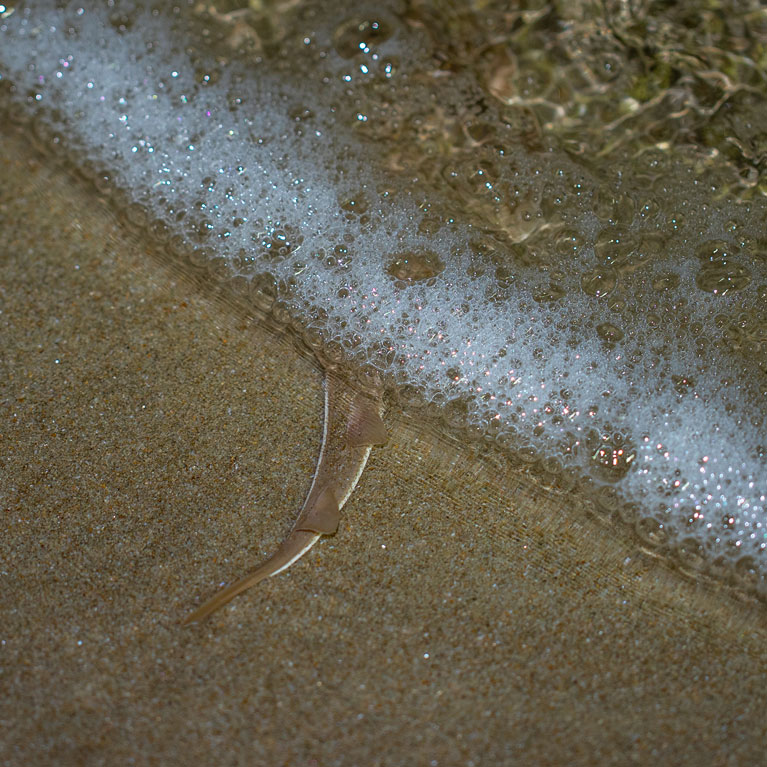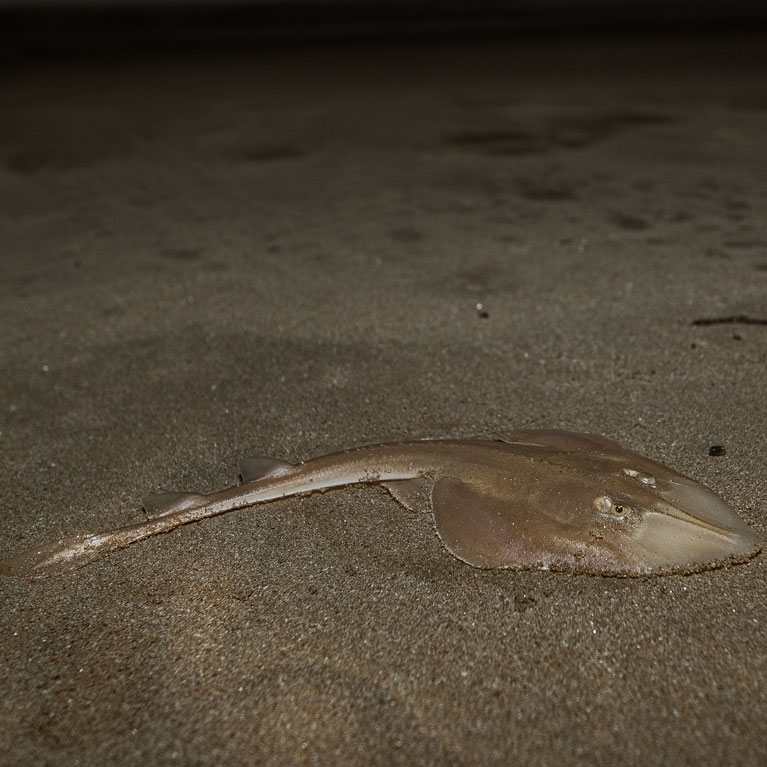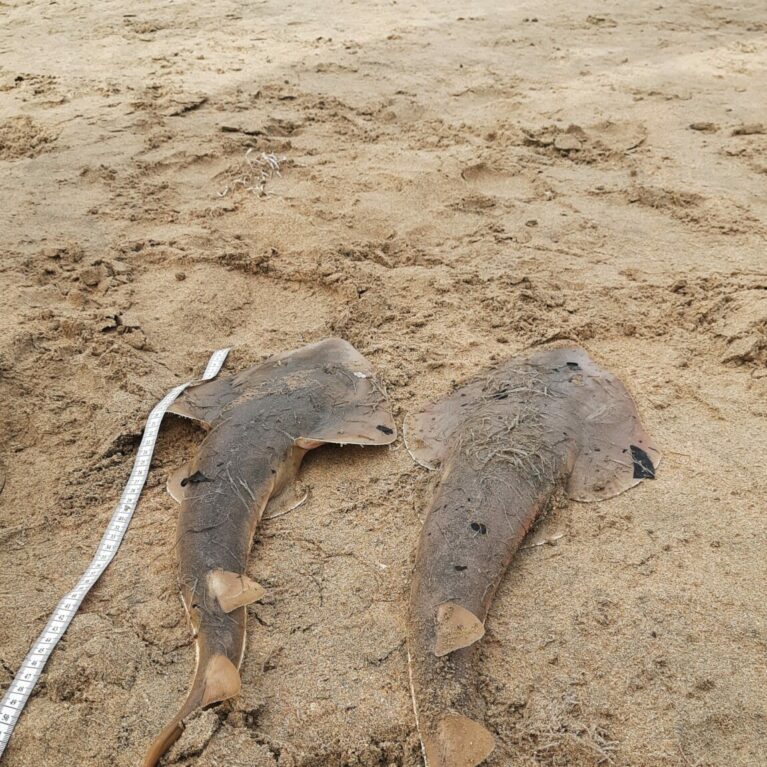The guitarfish of Goa, western India
How are guitarfish using the shallow coastal habitats of Goa in western India, and how does that overlap with the fisheries there? How do these rays fare with the stress of capture? Do they survive if they are released? These are some of the questions Trisha is on a mission to answer. She is focusing on the Critically Endangered, CITES-listed widenose guitarfish that is also listed under India’s Wildlife Protection Act. She’ll also be looking at the habits and habitat use of related species, filling critical gaps in our knowledge and using the information to support the development of conservation management plans.
Although I grew up in an Indian city that lies far from the coast, I’ve loved the ocean and its vast mysteries from a very young age. I always looked for any excuse to be by the sea and exploring its secrets. Combining this with an inclination for science and a passion for nature and wildlife, I decided to pursue a career in marine biology.
Soon after completing my Master’s, I did an internship on fisheries bycatch on India’s west coast. There I saw my first shark – a small spadenose shark caught by local fishers –...



Strum with care: understanding fisheries impacts on threatened guitarfish in India to inform their conservation
Our project aims to understand the habitat use and impacts of fisheries on Critically Endangered guitarfish populations in Goa, western India, and develop locally appropriate conservation solutions.
The widenose guitarfish Glaucostegus obtusus is classified as Critically Endangered, is protected under CITES and has recently been listed under Schedule I of India’s Wildlife Protection Act, yet it is exceptionally understudied. Our project aims to address critical knowledge gaps in the habitat ecology of this guitarfish and related species. This can inform the development of science-based conservation plans and make a real difference to populations of these threatened species.
Giant guitarfish (Glaucostegus spp.) are found primarily in tropical nearshore waters where they are highly vulnerable to overexploitation by coastal fisheries. All the species are listed as Critically Endangered. There is very little scientific information about them from developing countries like India, where there is a high diversity of guitarfish along with a large and complex coastal fishery. Ecological characteristics such as habitat use can inform the design of effective, science-based conservation measures and need to be studied.
Guitarfish use shallow bays, estuaries and lagoons as feeding, mating and nursery areas. Identifying these essential fish habitats, and understanding their seasonal use by different life stages, can help protect guitarfish in the most vulnerable life stages because area-based strategies can then be developed. Alongside this, live release has been proposed as a conservation measure for guitarfish and is being successfully implemented in some regions (such as Brazil). In Goa, however, the survival rate of these individuals after they have been caught and released remains unknown. We need to understand these survival rates better to test the effectiveness of this measure in conserving guitarfish populations.
In Goa, widenose guitarfish are found in shallow coastal waters, where they overlap with fishing, tourism and other disturbances. Juveniles and pups are often caught as bycatch in small-scale fisheries. Our project aims to understand how guitarfish use these nearshore habitats and are impacted by fisheries. This study will serve as a baseline for further research to develop conservation interventions for guitarfish in Goa. We will also work towards increasing public awareness about these threatened species and make guitarfish flagship species for marine conservation in Goa.
We aim to understand the impacts of fisheries on guitarfish populations and develop locally appropriate conservation measures. Our specific objectives are to assess:
- Habitat use and overlap with small-scale fisheries.
- Biological and population characteristics in nearshore habitats.
- Post-capture stress and survival.
Summary of main research results/outcomes
The conducted the first abundance estimate for these Critically Endangered species in an Indian site, forming a benchmark for long-term monitoring in Canacona, South Goa. Galgibag emerged as a potential nursery ground for widenose guitarfish, with pupping likely occurring in December. Guitarfish habitats showed significant overlap with nearshore fishing grounds, but catch rates in the local artisanal nets were relatively low. Live release initiatives showed promise as a conservation measure, with our outreach activities having some success in promoting live release. Identification of Galgibag as an Important Shark and Ray Area (ISRA) can be a valuable tool in guiding the sustainable development, tourism and fisheries management in this region. Our work laid the foundation for a long-term research, monitoring and conservation project for guitarfish in Goa and beyond.

